Introduction
In the oil and gas industry, assets are subject to different damage mechanisms throughout their useful life, which implies that, without an adequate maintenance plan, their integrity may be compromised over time. Some of the threats to which they are exposed are corrosion, natural forces, damage caused by third parties, among others.
The international standard ASME B31.8S regarding on-shore pipeline integrity management specifies 3 main methodologies for the inspection of such systems, which are:
- In-Line-Inspection (ILI)
- Hydrostatic Testing
- Direct Assessment Methodologies (for External Corrosion/Internal Corrosion/Stress Corrosion Cracking)
All these methodologies involve a significant investment and, therefore, it is not viable to adopt a high frequency of execution. As a guide, the recommendations for the necessary inspection periods are presented below [1].
| Inspection technique |
Period (years) |
Criteria |
| Pc > 50% SMYS |
50% SMYS > Pc > 30% SMYS |
Pc < 30% SMYS |
| Hydrostatic Testing |
5 |
TP = 1.25 · MAOP |
TP = 1.39 · MAOP |
TP = 1.65 · MAOP |
| 10 |
TP = 1.39 · MAOP |
TP = 1.65 · MAOP |
TP = 2.20 · MAOP |
| 15 |
Not allowed |
TP = 2.00 · MAOP |
TP = 2.75 · MAOP |
| 20 |
Not allowed |
Not allowed |
TP = 3.33 · MAOP |
| ILI |
5 |
Pf > 1.25 · MAOP |
Pf > 1.39 · MAOP |
Pf > 1.65 · MAOP |
| 10 |
Pf > 1.39 · MAOP |
Pf > 1.65 · MAOP |
Pf > 2.20 · MAOP |
| 15 |
Not allowed |
Pf > 2.00 · MAOP |
Pf > 2.75 · MAOP |
| 20 |
Not allowed |
Not allowed |
Pf > 3.33 · MAOP |
| Direct Assessment |
5 |
All immediate indications plus one scheduled |
All immediate indications plus one scheduled |
All immediate indications plus one scheduled |
| 10 |
All immediate indications plus all scheduled |
All immediate indications and more than half of the scheduled ones |
All immediate indications plus one scheduled |
| 15 |
Not allowed |
All immediate indications plus all scheduled |
All immediate indications plus half of the scheduled ones |
| 20 |
Not allowed |
Not allowed |
All immediate indications plus all scheduled |
Table 1. Recommended re-inspection periods (ASME B31.8S).
Although the ILI methodology gained undisputable prominence in the last decade, both due to the quantity and quality of information obtained and technological advances within the field, unfortunately not all systems are «piggable».
The process known as external corrosion direct assessment, ECDA for its acronym in English, is a methodology structured in four stages that seeks to identify the existence of active corrosive processes on a pipeline, allowing the establishment of mitigation measures that ensure the integrity of assets. This type of assessment is widely used in pipeline systems where it is not feasible for operators to perform internal inspections (ILI) or pressure tests.
The process contemplates the identification and location of possible points with active external corrosion, excavations for the evaluation and repair of defects, and definition of re-inspection periods. The analysis of the information collected in all stages allows the outlining of mitigation actions.
Pipeline systems, mainly those for distribution located in populated centers, are usually exposed to interference from various types of stray currents and damage by third parties, requiring permanent monitoring, for which ECDA offers an excellent tool. One of the most important characteristics of the ECDA process is that it is a continuous process as it includes the definition of the re-inspection period that will start a new cycle. Maintaining its systematization will allow not only identifying improvement opportunities for the system under study but also for the execution of the methodology. It also allows evaluating the effectiveness of measures that have been taken previously.
Like many other analyses, the quantity and quality of available information is paramount for its execution. A poor database can lead to poor segmentation of the system or even erroneous conclusions. A first ECDA process can be used as a baseline, but it is essential to constantly feedback the database.
The Process
The ECDA process can be summarized in the following circular flow diagram.

Figure 1. Summarized diagram of the ECDA process.
In the «Pre-Assessment» stage, the feasibility of carrying out the ECDA process is identified and, subsequently, the system is segmented into units that behave similarly in terms of susceptibility to external corrosion. The latter can be likened to what is done during a risk analysis.
This stage of the process is very important, especially when it is carried out for the first time, as it is when all the available information about the systems is collected and anomalous conditions are evaluated. Figure 2 shows an example of a gas distribution system embedded in an urban center and surrounded by an electric railroad network (red dotted line).

Figure 2. Gas distribution system and electric railroad network
In this example, the system under study has more than 10 years of ECDA implementation and a history of electrical tests. The feasibility of using this inspection technique was evident; however, in the pre-assessment stage, the following points were highlighted:
- The system does not have a coating or soil conditions that can generate electrical shielding.
- Although there are parts of the surface in the systems that are paved (which can alter the effectiveness in detection), it has been demonstrated over the years that indirect inspections can be carried out without inconvenience.
- Due to the location of these gas pipelines (in a city), it is inevitable that there are other buried structures, signage, and vandalized installations, as well as high vehicular traffic that hinder smooth progress in the surveys. However, the extensive experience of the personnel who have been executing the task in this particular system allowed the ECDA process to be developed without major difficulties. Another advantage of systematizing the process is that, if the work team is maintained, their knowledge of the system and the environment is perfected in each cycle.
A key point of this stage is focused on defining the techniques that will be used in the second stage of «Indirect Inspection«. Of course, having carried out multiple ECDA processes simplifies this decision. The NACE SP502 standard [2] establishes that at least 2 indirect inspection techniques should be selected. These techniques must be complementary (that is, between both they must compensate for the weak points of the other). The aforementioned standard presents recommendations on some of them and their applicability. In the industry, two techniques that are widely implemented are CIPS (Close Interval Potential Survey) and DCVG (Direct Current Voltage Gradient). In this case, from previous experience, it could be assured that the joint use of both provides satisfactory results to indirectly evaluate the state of the system.
Among the variables relevant to the ECDA process are, in addition to the construction data of the pipeline, information related to the environment (soil type, resistivity data) and the cathodic protection system (location of anodes, possible sources of stray currents, periods without cathodic protection, etc.). In certain cases of very old systems, part of the information mentioned above is often not available during the first execution of the ECDA process. This is where the first benefit of maintaining this systematized methodology is observed: a continuously improving database.
The frequent collection of information alone is not enough since data, thanks to technological developments in recent years, is overabundant. What generates significant benefits of the process is documenting continuous improvement strategies for procedures or even generating a Data Collection and Improvement Program within the Integrity Management Plan.
The permanent improvement of the database allows refining the segmentation of the systems. As mentioned at the beginning of this section, another objective of the «Pre-assessment» stage is to divide the system into units of similar susceptibility to the threat under study. In a first execution, it is possible that overly conservative criteria are taken. A typical case is that initially segmentation is done by slight differences in the age of the subsystems and then, in subsequent cycles, when it is evident that the condition of the older sections is very similar to that of newer sections, the segmentation is simplified.
On the contrary, it is also possible that relevant criteria are overlooked. For example, if the impact of possible electrical interference is unknown, the proximity to the railroad lines may not be considered in the first segmentation. Getting to know the system in an orderly and documented manner allows correcting these deviations in future ECDA cycles.
Among the most significant findings that usually occur in a first ECDA cycle are:
- Unknown locations of galvanic anodes that are reported as DCVG defects.
- Excavations that reveal repairs not recorded in the database, even many with coatings different from the original type of the rest of the pipeline.
- Detection of interference sources not considered until now.
- Detection of electrical discontinuities not recorded in system documentation (insulating joints).
During the «Indirect Inspections» stage, through the systematization of the ECDA process, special attention is paid to:
- Coating defects that have been detected in the past (through DCVG) and their evolution over the years.
- Areas where coating repairs have been previously made.
A new ECDA cycle allows early detection of deficient coating repairs. An example is shown in the following figure where it is visualized how, during continuous surveys carried out in 2023, a failure was found at the same point where there was already a repair made in 2015 (previous ECDA cycle).

Fig. 3. Example of coincidence of previous excavation with current DCVG defect
The above situation is not uncommon. It is a real problem that in minor coating repairs there is not an adequate quality standard whether in applicators, surface preparers, or inspectors, and they present failures prematurely.
After carrying out the inspections, the defects are classified according to their criticality as «Immediate», «Scheduled», and «Monitoring» anomalies. The mitigating measures that are taken in successive ECDA cycles reduce (and in some cases, eliminate) the number of «Immediate» indications.
During the third stage («Direct Assessment»), the aim is to identify the existence of metal loss defects due to corrosion. Direct verifications often make significant findings not recorded by companies until that moment, such as: dielectric joints, non-metallic sections, coating about to fail (for example, blisters in FBE, detached heat-shrinkable sleeves).
The last stage («Post-assessment») focuses on analyzing the effectiveness of the process and calculating the remaining life of the asset. Successive applications of the ECDA process allow confirming whether the application of mitigating actions has been effective, ensuring that there is no metal loss due to corrosion.
Conclusions
Systematizing the 4 stages of the ECDA process presents multiple advantages:
- Continuous improvement of the database: This point could be related to the Data Collection and Improvement Program of an Integrity Management Plan. It allows detecting changes in the system (as an example are the areas influenced by stray currents or changes in the coating).
- Optimization of segmentation criteria: The repetition of successive ECDA cycles allows defining more clearly the criteria of susceptibility to corrosion based on the response of the system to different characteristics.
- Evaluation of the application of corrective measures: and early detection of deviations.
- Identification of improvement opportunities in coating repair procedure.
- Knowing the «critical» zones of the system.
Throughout the process, the importance of having a trained team with vast experience is evident. Mainly when the adoption of this methodology is recent and uncertainty is high. The continuity of the process with efficient management improves the effectiveness of the methodology and significantly reduces the risk in the analyzed sections.



















